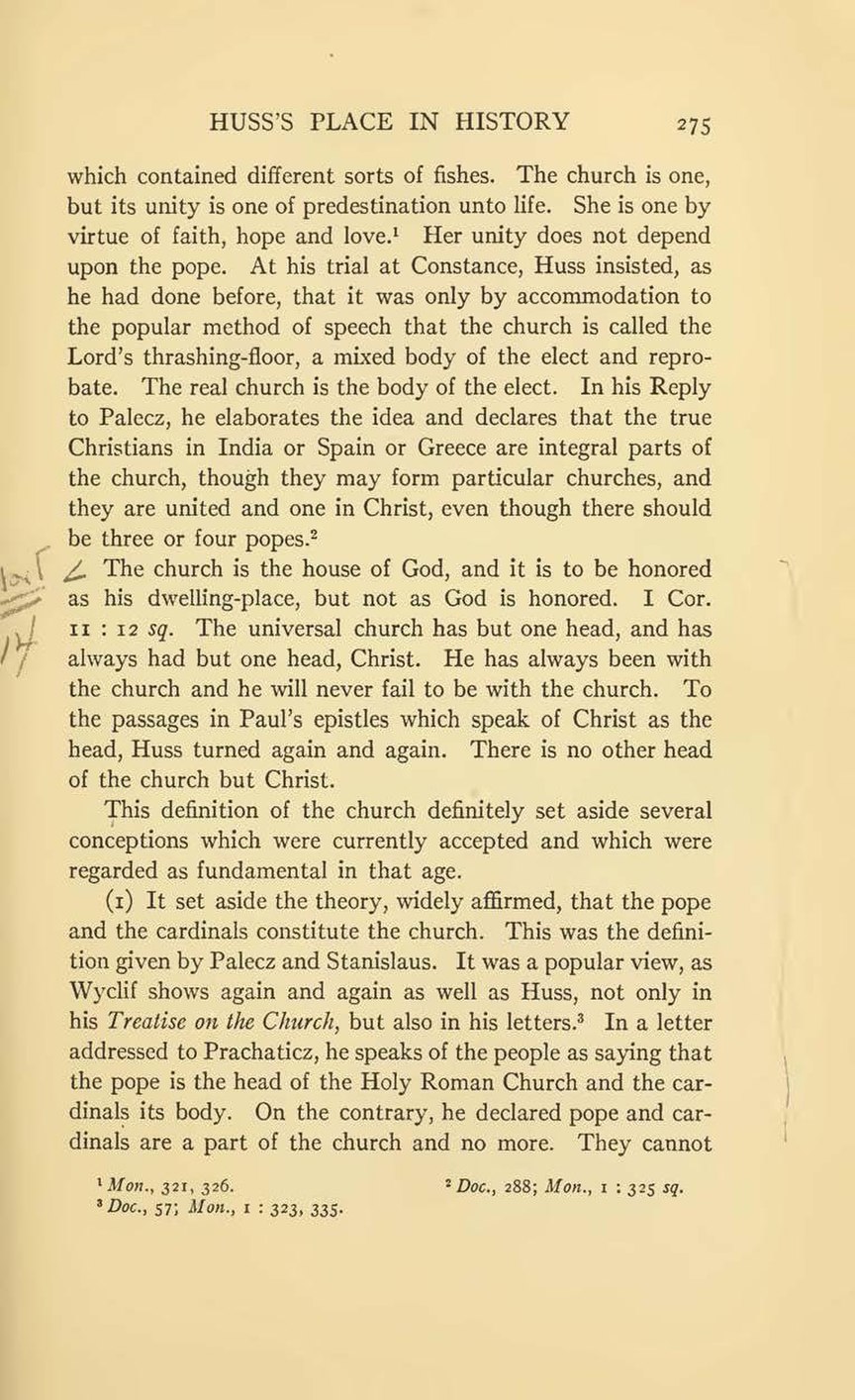which contained different sorts of fishes. The church is one, but its unity is one of predestination unto life. She is one by virtue of faith, hope and love.[1] Her unity does not depend upon the pope. At his trial at Constance. Huss insisted, as he had done before, that it was only by accommodation to the popular method of speech that the church is called the Lord’s thrashing-floor, a mixed body of the elect and reprobate. The real church is the body of the elect. In his Reply to Palecz, he elaborates the idea and declares that the true Christians in India or Spain or Greece are integral parts of the church, though they may form particular churches, and they are united and one in Christ, even though there should be three or four popes.[2]
The church is the house of God, and it is to be honored as his dwelling-place, but not as God is honored. I Cor. 11: 12 sq. The universal church has but one head, and has always had but one head, Christ. He has always been with the church and he will never fail to be with the church. To the passages in Paul’s epistles which speak of Christ as the head, Huss turned again and again. There is no other head of the church but Christ.
This definition of the church definitely set aside several conceptions which were currently accepted and which were regarded as fundamental in that age.
(1) It set aside the theory, widely affirmed, that the pope and the cardinals constitute the church. This was the definition given by Palecz and Stanislaus. It was a popular view, as Wyclif shows again and again as well as Huss, not only in his Treatise on the Church, but also in his letters.[3] In a letter addressed to Prachaticz, he speaks of the people as saying that the pope is the head of the Holy Roman Church and the cardinals its body. On the contrary, he declared pope and cardinals are a part of the church and no more. They cannot
